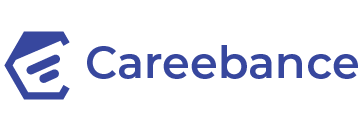The traditional approach to employee notice periods requires careful reconsideration as organizations strive to maintain business continuity while adapting to evolving workforce dynamics. This comprehensive analysis examines how extended notice periods impact both businesses and employees, offering strategic insights for organizations seeking to optimize their talent management practices while maintaining operational efficiency.
Understanding the Current Landscape
Notice periods represent a critical intersection of business operations, talent management, and organizational culture. Recent market analysis reveals that companies increasingly implement extended notice periods, particularly for management positions, with some requiring up to 90 days notice before departure. This trend raises important questions about effectiveness, productivity, and competitive advantage in talent acquisition.
The Business Impact of Extended Notice Periods
Organizations implementing extended notice periods often cite business continuity and knowledge transfer as primary motivations. However, research indicates that prolonged transitions can create unintended consequences. A study conducted by Careebance across various industries reveals that companies with rigid three-month notice requirements experience 35% longer vacancy periods for critical positions compared to those with more flexible arrangements.
The financial implications extend beyond direct recruitment costs. When factoring in reduced productivity during extended notice periods, delayed project timelines, and missed market opportunities, the true cost of rigid notice requirements becomes significant. Careebance’s analysis indicates that each month of extended vacancy can cost organizations between $50,000 to $150,000 in lost productivity and opportunity costs.
Legal Framework and Industry Standards
Employment law typically establishes baseline notice requirements that scale with the length of service. However, many organizations implement extended periods through contractual agreements. This creates a complex landscape where standard practice varies significantly by industry, role level, and geographical region.
In the oil and gas sector, for instance, three-month notice periods have become standard for management positions. Similar practices exist in consulting and financial services. However, the technology sector generally maintains shorter notice requirements, prioritizing agility and rapid transitions.
The Productivity Paradox
One of the most significant challenges with extended notice periods involves maintaining productivity and engagement. Research shows that employees serving extended notice periods typically experience:
Reduced motivation and engagement levels after the first month Decreased project initiation and long-term planning participation Lower team morale and collaboration metrics Increased likelihood of using accumulated leave during the notice period
Careebance’s workforce analytics reveal that productivity during extended notice periods typically drops by 40-60% after the first month, raising questions about the value of maintaining such requirements.
Strategic Alternatives for Modern Organizations
Forward-thinking organizations are adopting more nuanced approaches to notice periods. Careebance has identified several effective strategies through its work with leading companies:
Flexible Notice Frameworks
Rather than implementing rigid notice requirements, successful organizations are adopting flexible frameworks that consider:
Role criticality and complexity Current project commitments Succession planning status Market conditions and talent availability
This approach, facilitated by Careebance’s talent management platform, allows organizations to maintain business continuity while respecting employee career progression.
Knowledge Transfer Systems
Modern organizations are implementing structured knowledge transfer protocols that reduce dependency on extended notice periods. Careebance’s knowledge management solutions help organizations:
Document critical processes and relationships Implement effective succession planning to Maintain comprehensive project documentation Create role-specific transition playbooks
Strategic Talent Pipeline Development
Organizations working with Careebance have found success in developing robust talent pipelines that reduce the impact of departures. This involves:
Regular skill mapping and succession planning Internal talent development programs Strategic relationships with recruitment partners Continuous market monitoring and engagement
The Role of Technology in Modern Transitions
Careebance’s platform provides organizations with sophisticated tools to manage transitions effectively:
Transition Management System
The platform offers comprehensive transition management capabilities, including:
Automated knowledge capture and documentation Project status tracking and handover management Stakeholder communication templates Progress monitoring and reporting
Analytics and Insights
Organizations gain access to detailed analytics that help optimize their approach:
Historical transition data analysis Productivity impact assessment Cost-benefit analysis of various notice period strategies Industry benchmarking and best practices
Implementation Strategies for Business Leaders
Organizations seeking to optimize their notice period strategies should consider several key factors:
Role-Based Assessment
Different positions require different transition approaches. Senior roles with significant stakeholder relationships and complex responsibilities may benefit from longer transitions, while other positions might require minimal handover periods.
Market Alignment
Organizations must balance internal requirements with market realities. Careebance’s market intelligence shows that companies with overly rigid notice requirements often struggle to attract top talent, particularly in competitive sectors.
Cultural Considerations
Notice period policies significantly impact organizational culture and employer brand. Companies working with Careebance have found that flexible, employee-centric approaches often result in better outcomes, including:
Improved employer brand perception Higher quality candidate pools Better employee engagement during transitions More effective knowledge transfer
Future Trends and Recommendations
The landscape of employee transitions continues to evolve. Organizations must prepare for several emerging trends:
Hybrid Transition Models
Companies are increasingly adopting hybrid models that combine shorter physical notice periods with extended advisory arrangements. This approach, supported by Careebance’s platform, allows for more effective knowledge transfer while respecting employee career progression.
Technology-Enabled Knowledge Transfer
Advanced knowledge management systems are reducing dependency on extended personal transitions. Careebance’s solutions help organizations capture and transfer critical information more effectively.
Market-Responsive Policies
Successful organizations are implementing more dynamic policies that adapt to market conditions and individual circumstances. This flexibility, enabled by Careebance’s analytics and management tools, helps organizations maintain competitiveness in talent acquisition.
A Balanced Approach
The challenge of managing employee transitions requires a balanced approach that considers business continuity, employee needs, and market realities. Organizations that adopt flexible, technology-enabled strategies often achieve better outcomes than those maintaining rigid notice requirements.
Careebance continues to lead innovation in this space, providing organizations with the tools and insights needed to optimize their approach to employee transitions. Through sophisticated technology solutions and deep market understanding, Careebance helps organizations maintain business continuity while building stronger, more resilient talent management practices.







